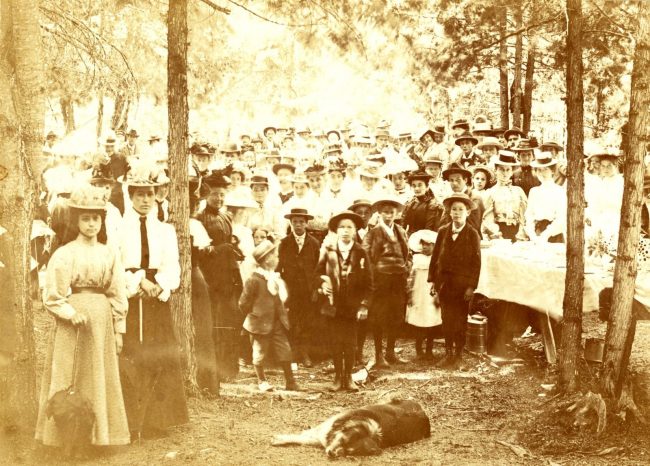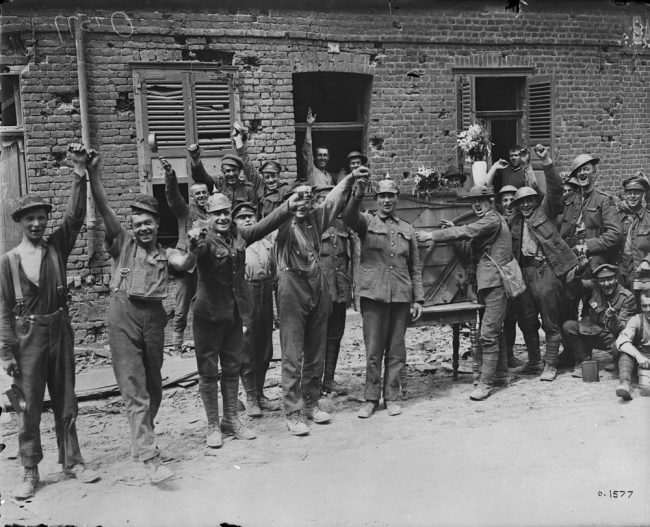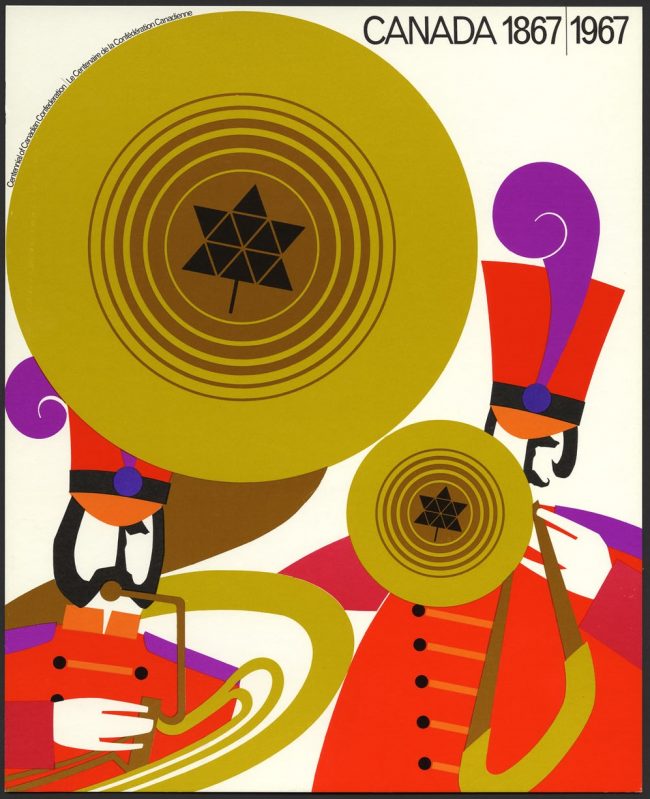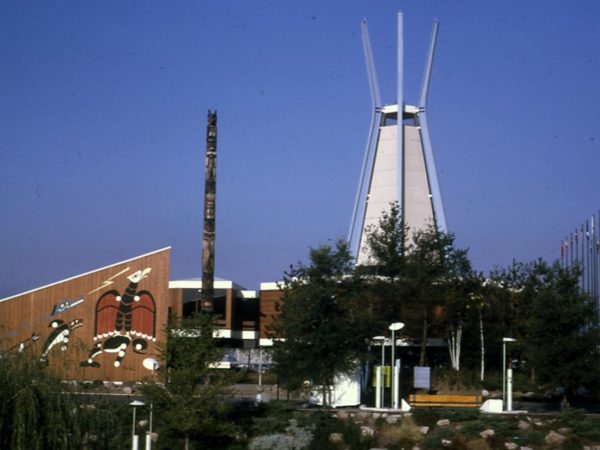Linguist duality was at the heart of the Confederation compromise of 1867. This manifested in a number of ways: a federal system to provide for a French-majority province and English-majority provinces; certain accommodations for French civil law and British common law traditions; and separate schools for the English-speaking Protestant minority in Quebec and for Catholic minorities elsewhere, which were largely French-speaking [1]1Les Cahiers de droit
Les langues officielles au Canada
1979.
The most obvious recognition of the principal was, of course, Section 133 of the British North America Act, which included recognition of French and English as the languages of the federal parliament and courts [2]2Les Cahiers de droit
Le bilinguisme judiciaire au Québec
1983. As John A. Macdonald explained, the purpose was to protect the French linguistic minority from the whims of the English linguistic majority:
[…] as it stands just now the majority governs; but in order to cure this, it was agreed at the [Quebec] Conference […] by the deputation from each province that the use of the French language should form one of the principles upon which the Confederation should be established, and that its use as at present should be guaranteed by the Imperial Act [i.e. the constitution]. (Hear hear.) John A. Macdonald, 1865 [3]3Québec City: Hunter, Rose & Co., Parliamentary Printers
Parliamentary Debates on the Subject of the Confederation of the British North American Provinces, 3rd session, 8th Provincial Parliament of Canada
1865
If linguistic duality was a key theme in 1867, then, to what extent would it be portrayed as such in subsequent commemorations of Confederation?

1897
Interestingly enough, the 30th anniversary found the country’s first Francophone Prime Minister, Wilfrid Laurier, not in the capital of Canada, but rather, in the capital of the British Empire. It was a sign of the times. Delegations from near and far had gathered in London to mark Queen Victoria’s diamond jubilee, on 20 June 1897.
Just over a week later, on July 1st, Laurier gave a speech to a Dominion Day banquet held at the Hotel Cecil in London, in which he emphasized the importance of the bonds of empire. He had good reason. Recent disputes over the Venezuela/British Guiana and Alaska/British Columbia borders had raised the real prospect of war – a war in which Canada would most certainly depend on the protection of Britain, its navy and its army.
Nevertheless, managing relations between Anglophone and Francophone Canadians was always top priority for Laurier. Fresh off the 1896 “Laurier-Greenway” compromise that had managed to settle (for a time) the dispute over French Catholic schools in Manitoba [4]4Revue d'histoire de l'Amérique française
La question des écoles du Manitoba: un nouvel éclairage
1979, the prime minister made a point of including duality, its past, present and future, as a theme in his speech.
The relationship, he asserted, had evolved from enmity to partnership. “It is no exaggeration,” he boasted, “to say that the history of Canada cannot be excelled by the history of England, or even by the history of France.” Laurier cited the parallel deaths of Wolfe and Montcalm, the “long struggle […] for constitutional government up to the present day,” and “the magnificent spectacle which we now give to the world of united races previously enemies. (Loud cheers.)” [5]5in Arthur Milnes (ed.), Canada Always: The Defining Speeches of Sir Wilfrid Laurier, Toronto: McClelland & Stewart, 2016
Speech of the Dominion Day Banquet, Hotel Cecil, London
July 1st, 1897
1917 & 1927
The 50th anniversary of Confederation in 1917 was a bit of a wash. Parliament had burnt to a crisp, the war in Europe continued to rage, and at home Anglophones and Francophones were bitterly divided over conscription [6]6Past Imperfect
Divided Once More: Social Memory and the Canadian Conscription Crisis of the First World War
2006.The commemorations that year were reflective of the near total absence of Francophone influence within the federal government and within the minds of Anglophones in general.
As such, commemorative activities sponsored by Ottawa included a series of military marches in front of the charred remains of Parliament and an English-unilingual commemorative stamp featuring the Fathers of Confederation.

The 60th anniversary of Confederation, in 1927, provided advocates of linguistic duality with the chance at a ‘do-over.’ This time, the situation was entirely different. Francophones were well represented in cabinet, French-Canadian diplomats were helping to assert Canada’s place as a modern and independent state at the League of Nations, and Anglophone elites of the ‘bonne entente’ movement were anxious to strengthen national unity [7]7Mens
Une réconciliation insaisissable: le mouvement de la bonne entente, 1916-1930
2007.
In this context, celebrating the history of linguistic duality and affirming its future became one of the central themes of the federally-sponsored commemorative activities [8]8Journal of the Canadian Historical Association
Appropriating the Past: Pageants, Politics, and the Diamond Jubilee of Confederation
1998. Brochures, booklets, and parade floats emphasized the shared historical role of French and British in Canadian nation-building, all promotional materials and participatory contests were done in both languages, the celebrations on Parliament Hill were bilingual, and the whole event was broadcast live from coast-to-coast in both languages. The 1917 stamp was also re-printed, but this time in bilingual format. As organising committee chair George Graham explained, the whole point was to bring about a “frank recognition of the equality of the two languages.”[9]9Ottawa: F.A. Acland
Report of the Executive Committee – National Diamond Jubilee of Confederation
1928
1967
Over a generation later, with the Quiet Revolution unfolding in Quebec, linguistic duality was once again front-and-centre in the nation’s consciousness. In 1965, the Royal Commission on Bilingualism and Biculturalism warned that the country was “passing through the greatest crisis in its history,” and that the equality of the two language groups would have to improve in a big way if the country was going to stay together [10]10
Report of the Royal Commission on Bilingualism and Biculturalism. General introduction, Book 1 : the official languages
1967.
While Francophones asserted their place in (or out of) Confederation, Anglophone identity had also begun to shift, becoming less ‘British’ and more open to diversity and to French Canada. [11]11Toronto: University of Toronto Press
The Other Quiet Revolution: National Identities in English Canada, 1945-71
2007
In this context, and perhaps more than ever before, linguistic duality was a prominent theme of the 1967 centenary events. The federal Centennial Commission funded hundreds of bilingual activities, Canada’s two languages featured in dozens of specially commissioned songs like Bobby Gimby’s famous “CA-NA-DA,” and the entire event culminated in Expo ’67 at Montreal [12]12Anthropologie et Sociétés
Une catharsis identitaire : L’avènement d’une nouvelle vision du Québec à Expo 67
2006, demonstrating to Canada and the world that Francophones were driving the country’s economic, cultural and (thanks to Mr. de Gaulle [13]13Bulletin d'histoire politique
«Vive le Québec libre ! » : la moralité au cœur d’une polémique. Réactions publiques entourant la visite du général de Gaulle au Québec en juillet 1967
2013) political evolution.

1992
Linguistic duality was present as a theme at the country’s next major anniversary, the 125th. Rather than a principal theme, however, it shared the stage with a multiplicity of others. In 1992, the country was grasping for meaning and reassurance in the face of an uncertain future.
Only two years earlier, the Meech Lake Accord had ended in political catastrophe, and the prospect of Quebec’s separation was more real than it had ever been in 1967, 1927, 1897 or even 1917. Canadians were also anxious about the country’s economic prospects; with the recession, the collapse of the cod fishery, and a US free trade deal that threatened to erode Canada’s independence. Moreover, and in the lead-up to the 1992 Charlottetown Accord, duality would take a back seat to other pressing concerns like Aboriginal self-government and provincial rights [14]14McGill Law Journal
From the Backroom to the Front Line: Making Constitutional History or Encounters with the Constitution: Patriation, Meech Lake, and Charlottetown
2012.
The result of all this, highlighted by the federal government’s flagship “125 years to celebrate / Il y a de quoi être fier” TV ad campaign, was a confused jumble of messaging. The imagery in the ads included depictions of vast natural spaces, rural scenes, the oil patch, the RCMP, Vimy, peacekeeping, the Chateau Frontenac, Highland dancing, Indigenous art, Expo ’67, the ’72 Summit Series, Terry Fox, Canada’s ranking atop the UN human development index and, rather bizarrely, a wave pool, seniors doing aerobics, and the Toronto Blue Jays. Linguistic duality was present as a theme in that federal ads and events were bilingual, but it had been submerged by a plethora of others.
2017…?
Past representations of linguistic duality during the commemoration of Canada’s major anniversaries have been as much a reflection of the context surrounding cultural-linguistic relations as they were the result of an abstract constitutional principle. Canadians, and the federal government in particular, have tailored their commemoration of linguistic duality to meet the perceived needs of the political context of the day.
What, then, for 2017? Time will tell, but as in previous years, the focus reflects the driving concerns of today. Officially, the four major themes announced by the federal government are: diversity and inclusion, reconciliation with Indigenous people, youth, and the environment. If it counts only as an implicit theme, then what does this tell us about the state of linguistic duality today? Is it so entrenched in our national psyche that we need simply take it for granted? Or does it need to be affirmed and renewed at every opportunity? It would seem to me that the latter approach recognizes that linguistic duality is not only an integral part of our past, but also our future.

